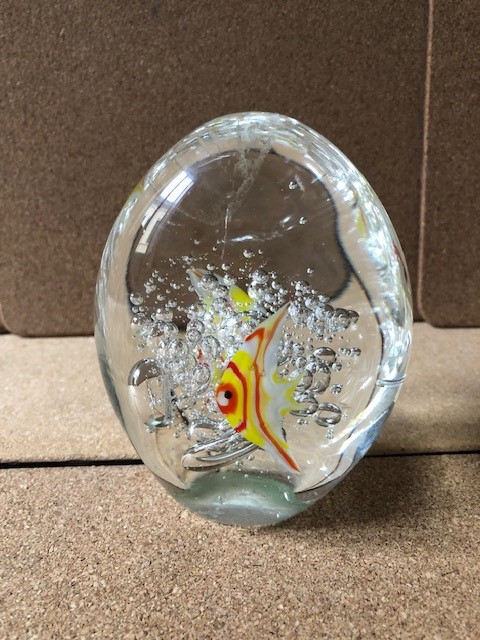Paolo Rossi: Murano glass in the 1900s: design and artisanal tradition
by Prof. Francesco Carelli
At the beginning of the 11th century in Murano, there was renewed fascination with the creation of glass. In fact, master glassblowers in Venice had already been creating small glass bottles using glassblowing techniques in 982. In the second half of the 13th century, all of the furnaces were transferred to the island of Murano, as a safety measure to protect the city.
After nearly 900 years of magnificent artisanal work, at the beginning of the 20th century, the creativity of architects and designers was combined with traditional craftsmanship. This was a particularly active period, unique in the history of glassmaking. Artists began to design items, particularly vases, compelling the masters in Murano to experiment and discover new expressive opportunities.
Up to the 20th century, the Murano’s glass products were based on Renaissance models. Then, on the wave of new designs by Louis Comfort Tiffany in the United States and Emile Gallé in France, Italy began to formulate a new way of conceptualizing artistic glass.
Two painters, Vittorio Zecchin and Teodoro Wolf Ferrari began working with the studio of Barovier artists. Murrhine vases took inspiration from nature themes, just as with artists of the Liberty movement, but they introduced a more abstract style than their foreign contemporaries.
In 1921 Paolo Venini and Giacomo Cappellin established V.S.M. Cappellin Venini & Company, a manufacturer that sought to design glass that went beyond traditional methods.
The synergy between designer and artisan became even closer. Glass production was geared towards the tastes of upper middle classes, which preferred a somber and minimal design as compared with the flashy, brightly colored styles of the more common motifs.
The company folded in 1925. Cappellin founded Maestri Vetrai Muranesi Cappellin & Company, keeping the artistic director Vittorio Zecchin, who had created the famous Neri e Rossi vases.
Instead, Paolo Venini started up V.S.M. Venini & Company. Napoleone Martinuzzi, his chief designer, began experimenting with new techniques. His pulegoso glass sparked lively debate. The term derives from the small air bubbles that formed in the glass, making it appear to be full of holes. In the local Murano dialect, puleghe indicates air bubbles that effectively ruin the glass. Petroleum was used as the reagent with the boiling material to multiply the air bubbles.
In 1926, Carlo Scarpa took over as artistic director of M.V.M. Cappellin & Company. The young architect had been called in to refurbish the furnace, but proved that he had other talents and Giacomo Cappellin invited him to work for the company. Scarpa brought back some of the techniques that were no longer in use in that period and added his own creative touch. The glass molds that he made with extremely bright colors, making them appear more like ceramic than glass, became renowned. His relationships with the master glassblowers was successful because he was not satisfied with simply using the successful techniques from the past, rather, he wanted to experiment. He was candid, but not easy to work for, and the artisans tended to claim that they were simply unable to provide what Scarpa wanted. However, in the end, the designer and his artisans were able to successfully implement his creative vision.
In the 1930s, the Primavera creations of Ercole Barovier were the result of experimentation, but also pure chance. The thickness of the vases developed from a fortuitous, but unfortunately, unrepeatable mixture.
In 1934, Carlo Scarpa transferred to Venini. Until 1947, his collections for the house had a strong personality and had an aesthetic discipline and imaginative power. The Sommersi and the Corrosi collections, for example, reinterpreted the concept of glass, making it appear similar to other materials such as marble, fabric and painted surfaces.
After the Second World War, brightly colored vases became popular, such as the Pezzati by Fulvio Bianconi produced for Venini & Company, conceived in an environment of lively creative energy and expressive freedom.
Instead the Fazzoletti vases, created by Fulvio Bianconi and Paolo Venini in the 1950s, were predominantly in shades of white. The image of lacework in glass signaled a high point in experimentation, when physical and imaginative elements intertwined.
The creative force that was triggered in Murano at the beginning of the 1900s is still being felt today. Young, and not so young, artists are currently carrying the tradition forward. They have proposed truly original works, genuine works of art. In any event, glass continues to show us its multi-dimensional essence, light and transparent, colored and blurred, manipulated and pure, mysterious and magical, with an unlimited capacity for innovation.
A treasure is the technique by Paolo Rossi, hand-blown and made with metallic-iridescent surface technique. In Venice there is important collection from the Venetian Murano collection by designer Paolo Rossi.





